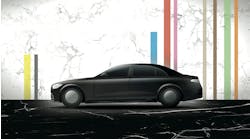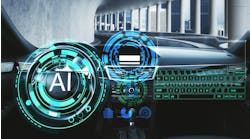How do you define “purpose” and why is it important?
Purpose is a very gray concept and an airy-fairy concept for many people. People don’t see it as a hardcore business initiative but it really is. The way I like to define it is threefold. The dictionary definition is the reason for which something is done or used, the aim or intention of something. A personal definition is from the Purpose Institute, which says purpose is a definitive statement about the difference you are trying to make in the world. For the organization, it’s the reason your industry or organization exists, the “why.” I think the concept of your “why” is important because organizations don’t usually start to make money. It’s usually to have an impact on the world, to serve customers. The key is to understand that “why” for a corporation, and the power is understanding what the employee’s personal purpose is and how that connects to the organizational purpose to drive engagement and business results.
The statistics around purpose back it up, too. In the book Firms of Endearment, they did a study that showed purpose-based organizations—like Ikea, Costco, Whole Foods—grew 1,646 percent between 1996 and 2011 compared to the stock market index, which only grew 157 percent. Those are huge differences. The study showed that there’s concrete evidence that purpose-based organizations are driving much higher results.
How can you figure out your company’s purpose?
The “what,” “where” and “why” is your mission, your vision, your purpose. The mission is what you’re trying to accomplish. Every organization has something they’re trying to do. For the collision repair industry, the “what” is providing the right parts and service to make vehicles last longer, perform better and keep drivers safe. The “where” is your vision, where you’re going. That’s to serve every vehicle on the road. The ultimate “why” is to keep the world moving. That’s such a powerful purpose that’s often overlooked. You take it for granted that you get in your car each day. The power behind this is connecting what you do and how you impact the lives of others. They don’t think of a strong purpose-based industry.
Through my career in human resources at medical device company Stryker, I had amazing experiences. But I also got to know myself more and what I do best, what my ultimate impact is on others and how I can have the most impact on the world. That transition started getting me thinking about what’s important to me, what I’m best at and Stryker was an amazing organization around HR. It was a real strategic business partner and they really helped people try to understand that, what you do best, where you’re best aligned in life, how you connect to the larger purpose of the organization. That journey, just asking those questions got me to where I am today.
How can a shop owner refresh his or her passion toward his or her business after being in it for so long?
If the business has been around for a while, you’ve helped a lot of people. If you’re a small mom-and-pop shop, and the owners are a bit jaded, you can look back on the past 30 years and see the impact you’ve had on people. When you’ve considered how many people you’ve helped continue moving on with their lives, that’s a really important message. If you’re trying to refresh your business, have the owners start talking about how you impact the lives of others in your community. Once you understand that, integrate it into your business. For example, maybe you helped someone get to their wedding on time. Get a picture of that customer, get those stories and share them during team meetings or put them on the wall. Wherever you can reinforce that message of what you’re trying to do. It’s not just a commercial transaction of selling a part but also how you impact the life. If you can weave that into your business, for your customers and your employees, all the better. It’s probably going to get them more engaged in your business versus having a very generic experience that’s void of any purpose.
“The ultimate ‘why’ is to keep the world moving. That’s such a powerful purpose that’s often overlooked.”— Louis Efron, industry speaker and human resources consultantHow does a company like Tesla reinforce its purpose?
The one thing that really attracted me to Tesla is that it’s a huge purpose lab. It’s an organization that has driven success based on the employee’s connection to the mission and purpose of what Tesla is trying to do. The organization went from 400 employees five years ago to over 12,000 employees today. It’s really driven on that whole concept of their people believe they’re changing the world. Employees want to transition the world to electric vehicles. There’s that huge connection.
What I was brought there to do was really harness that and start measuring employee engagement. Because even if you are really connected to mission and purpose, you can also find yourself in a pit stall where you’re so driven by what you’re trying to accomplish that other things in your life start to fall apart. You can quickly become disengaged, even from something that you love so much. You don’t pay attention to other areas of your life. What we’re trying to do is balance that with great leadership to balance the 360-degree view of life with your people. Instead of creating a job, you create a life. You need to look out for them beyond their job. You need to care about their personal time, their friends, their family, their life as a whole.
I launched something that was a tool I developed several years ago called Engagement360. It’s an engagement survey that has 16 core questions that measures the correlation between employee success and how engaged they are in the business. People had a chance to respond to it, give their good, bad and ugly feedback of what they were experiencing. The most important part of an engagement survey is what you do after. This initiative I developed was to get the feedback and understand the engagement levels team by team. What happened after that was that each team would get together with its scorecard, discuss the scores, what scores were high and which were low, then put an action in place that each team can improve upon for the next 6–12 months for their personal engagement. It’s not about the teams around them or the organization as a whole, but what will make the people on that specific team check a “five” on a certain engagement question? How do you make your life better as a team?
One thing that comes up a lot is that the team doesn’t work really well together and they don’t know how best to work together. It could be as simple as getting to know the team better, whether that’s a lunch now and then, team meetings to go around the room. Sometimes it’s departments not working well together. Maybe they would go out to the other team and spend a day with another team so they understand what they do better and they can come back and use that information to make the information work better. It’s very customized to the team. Whatever the team feels they need to make things better for them.



